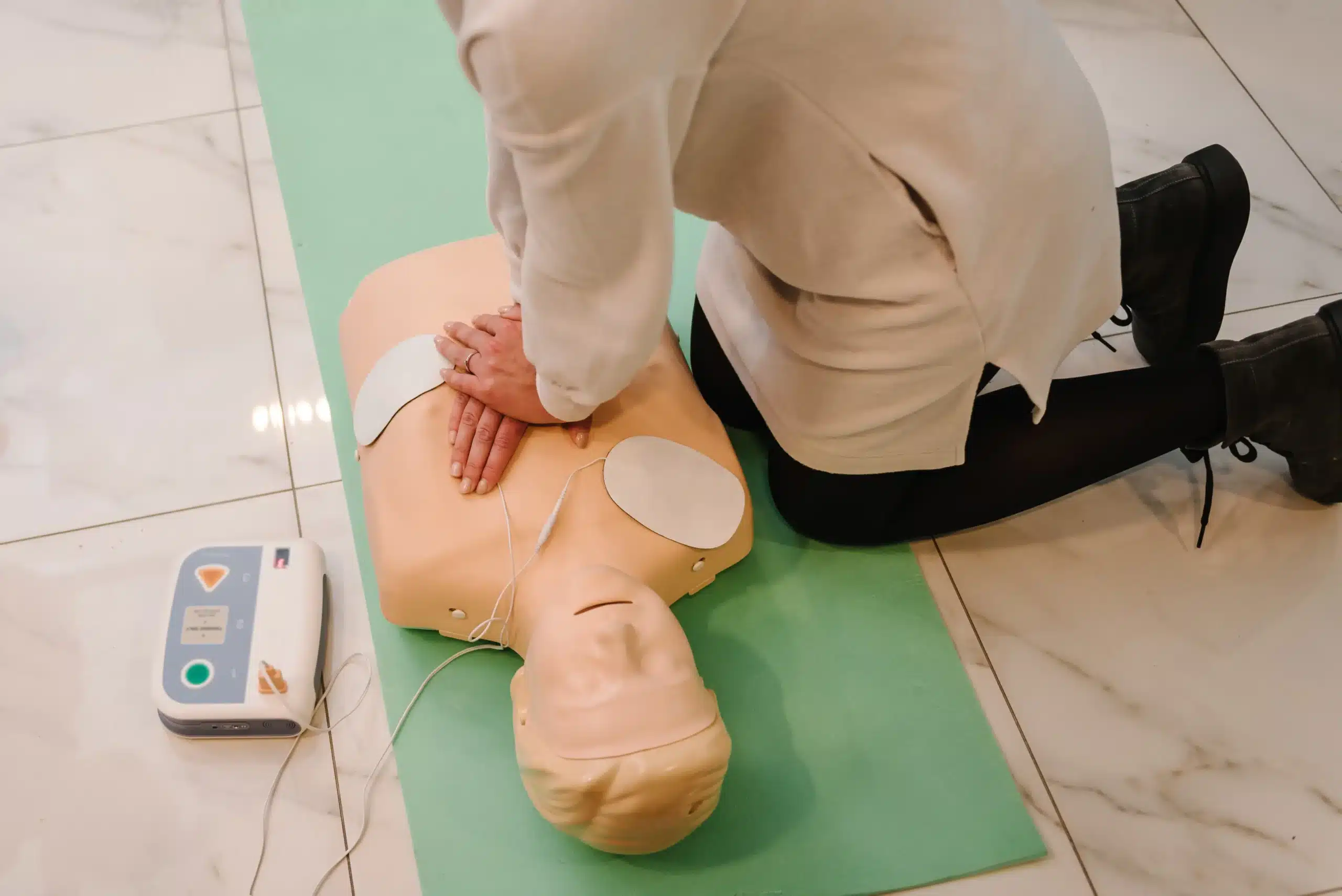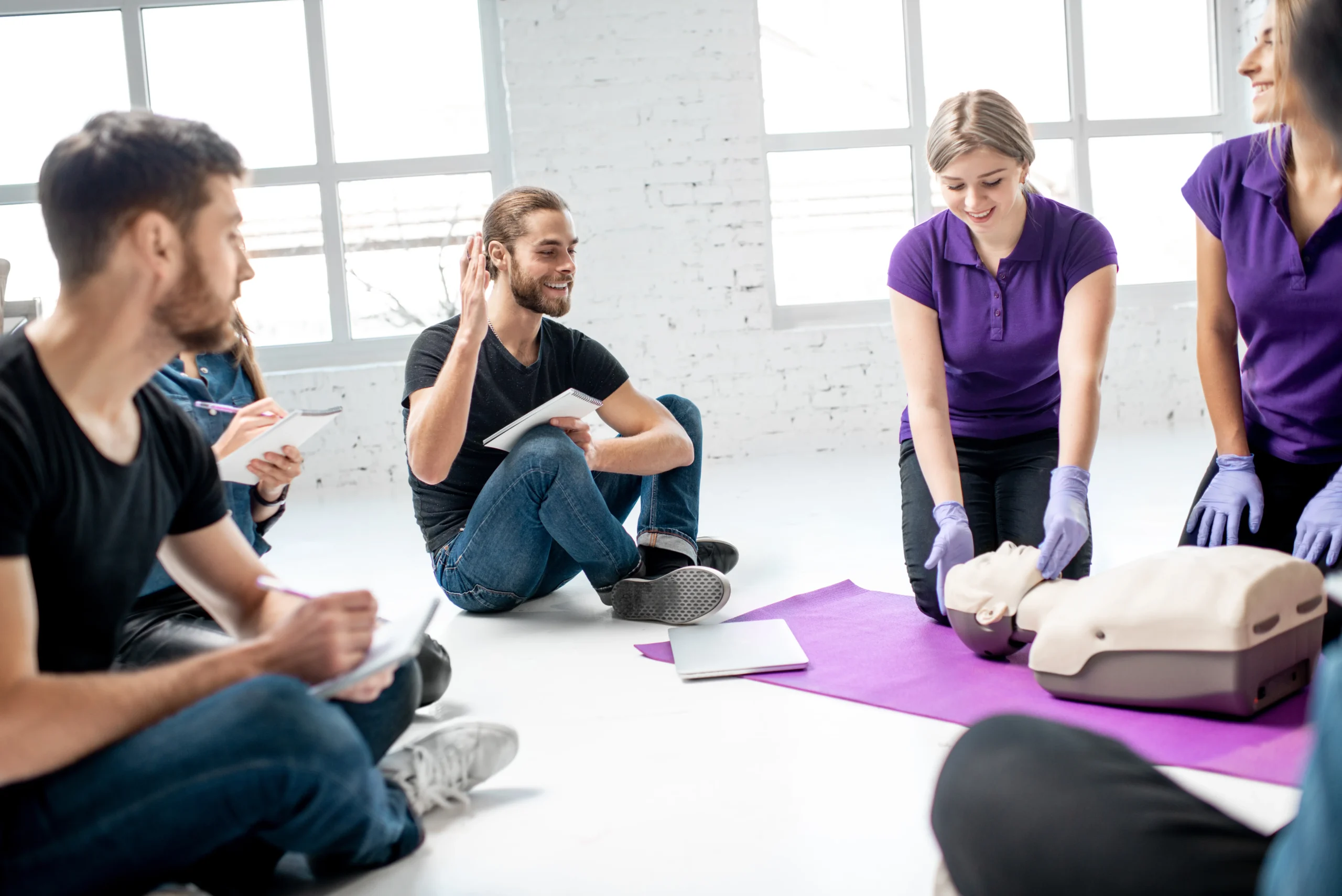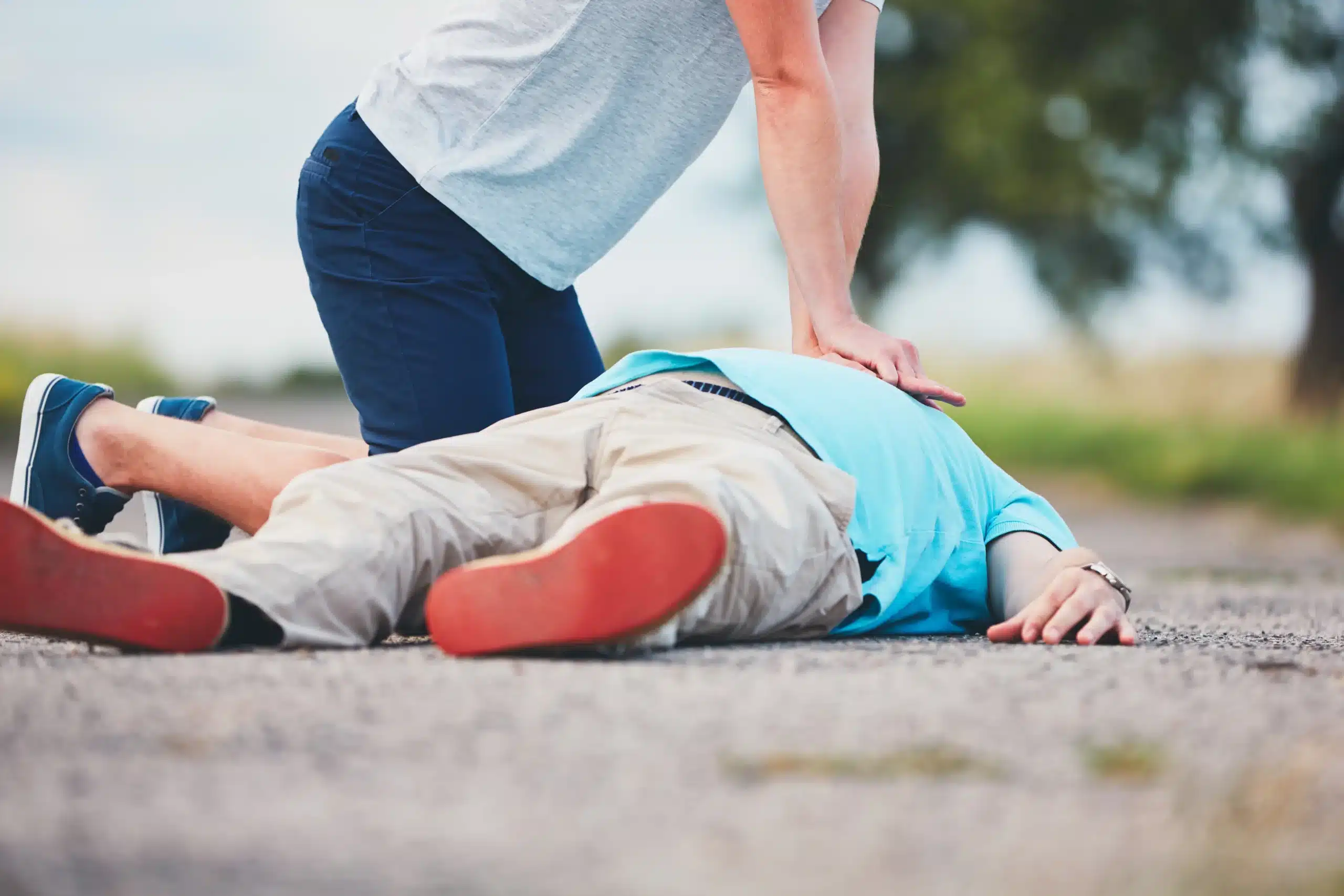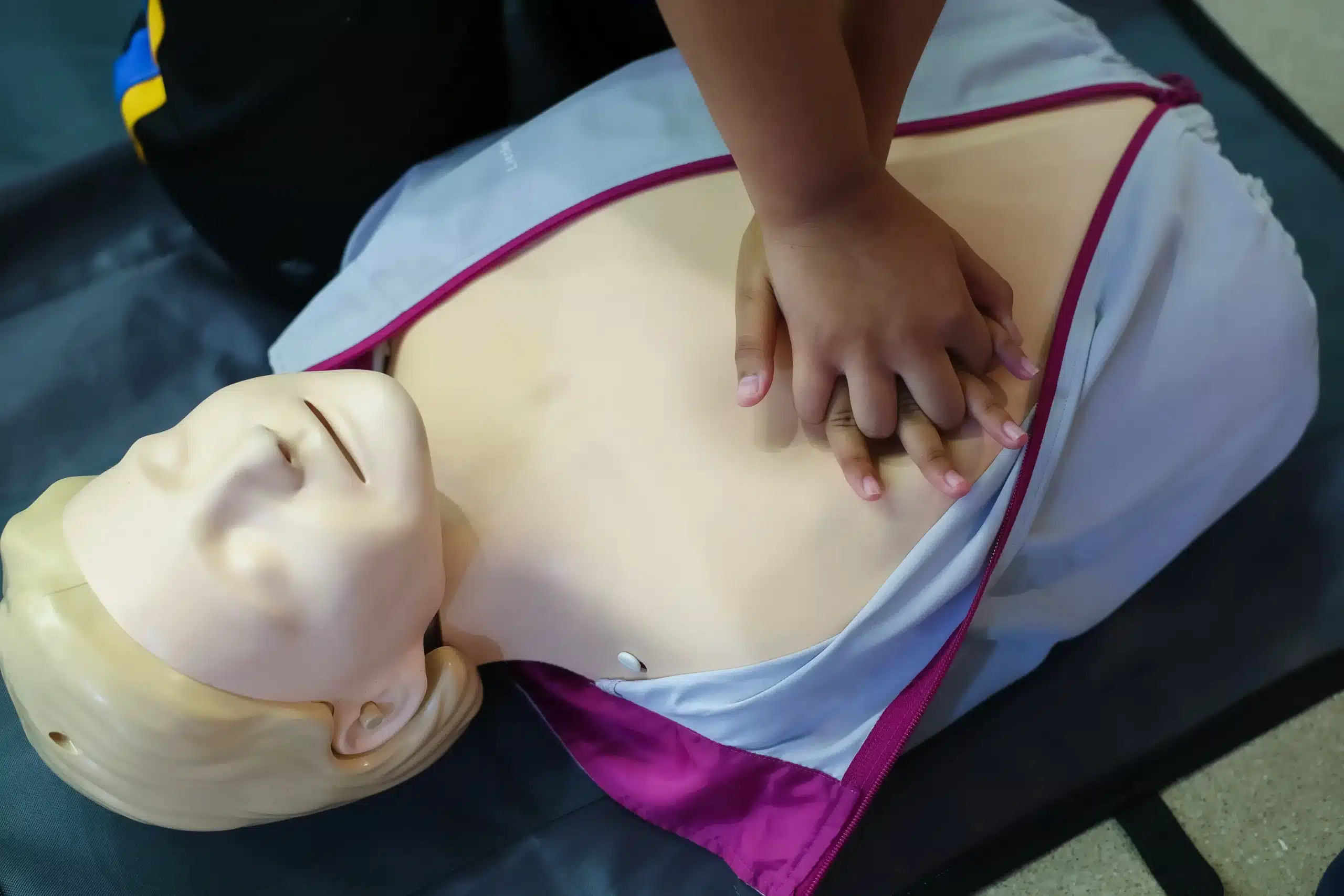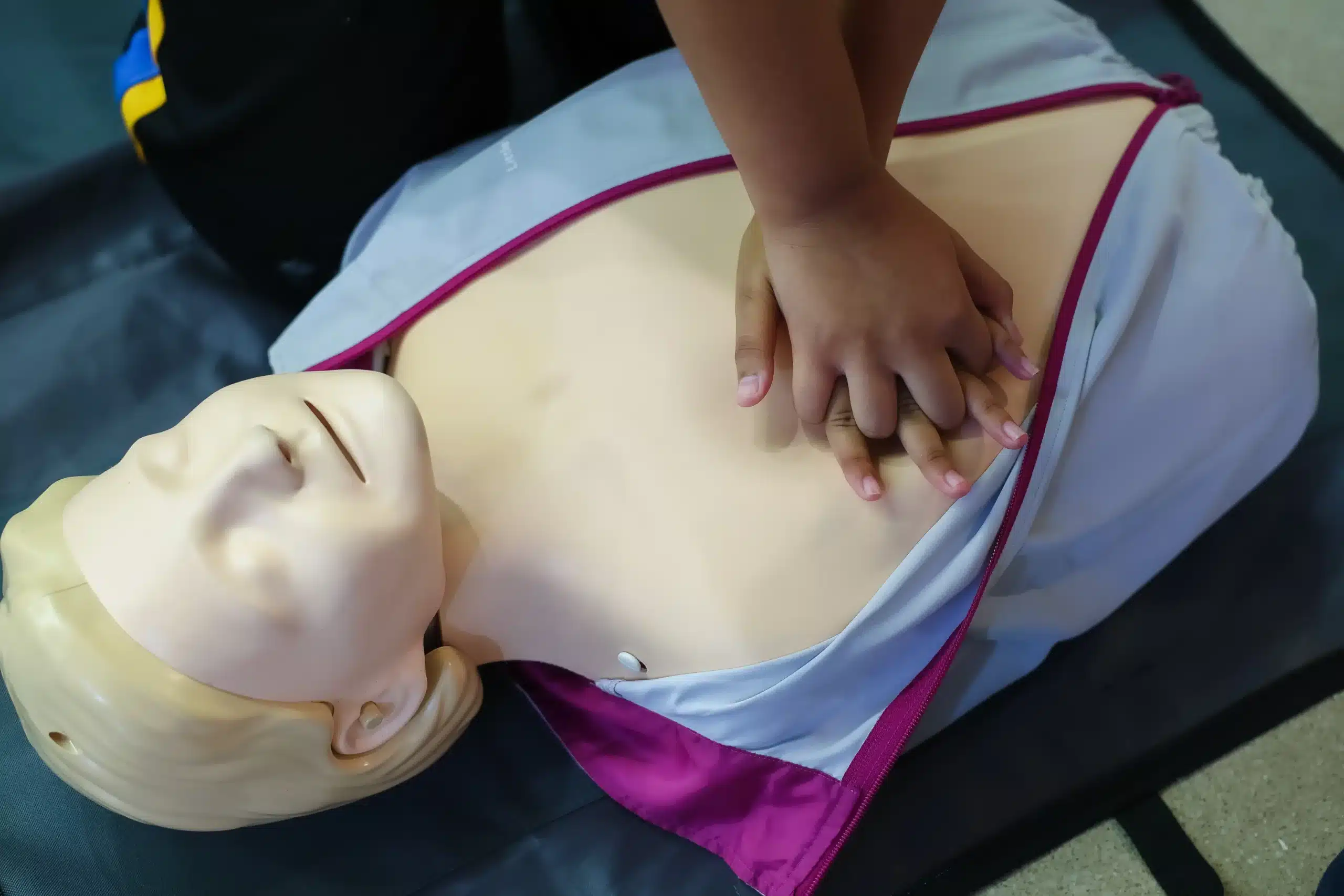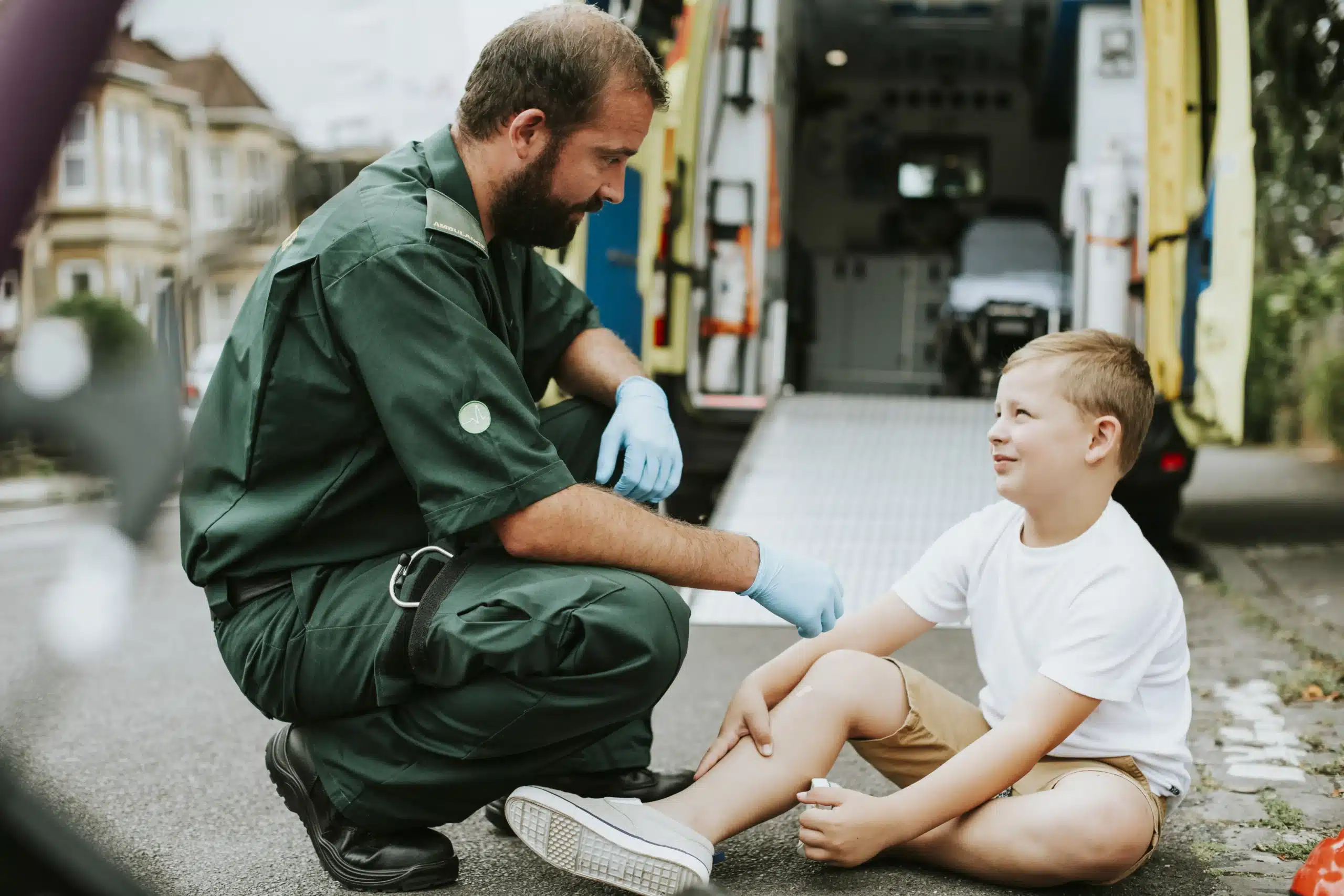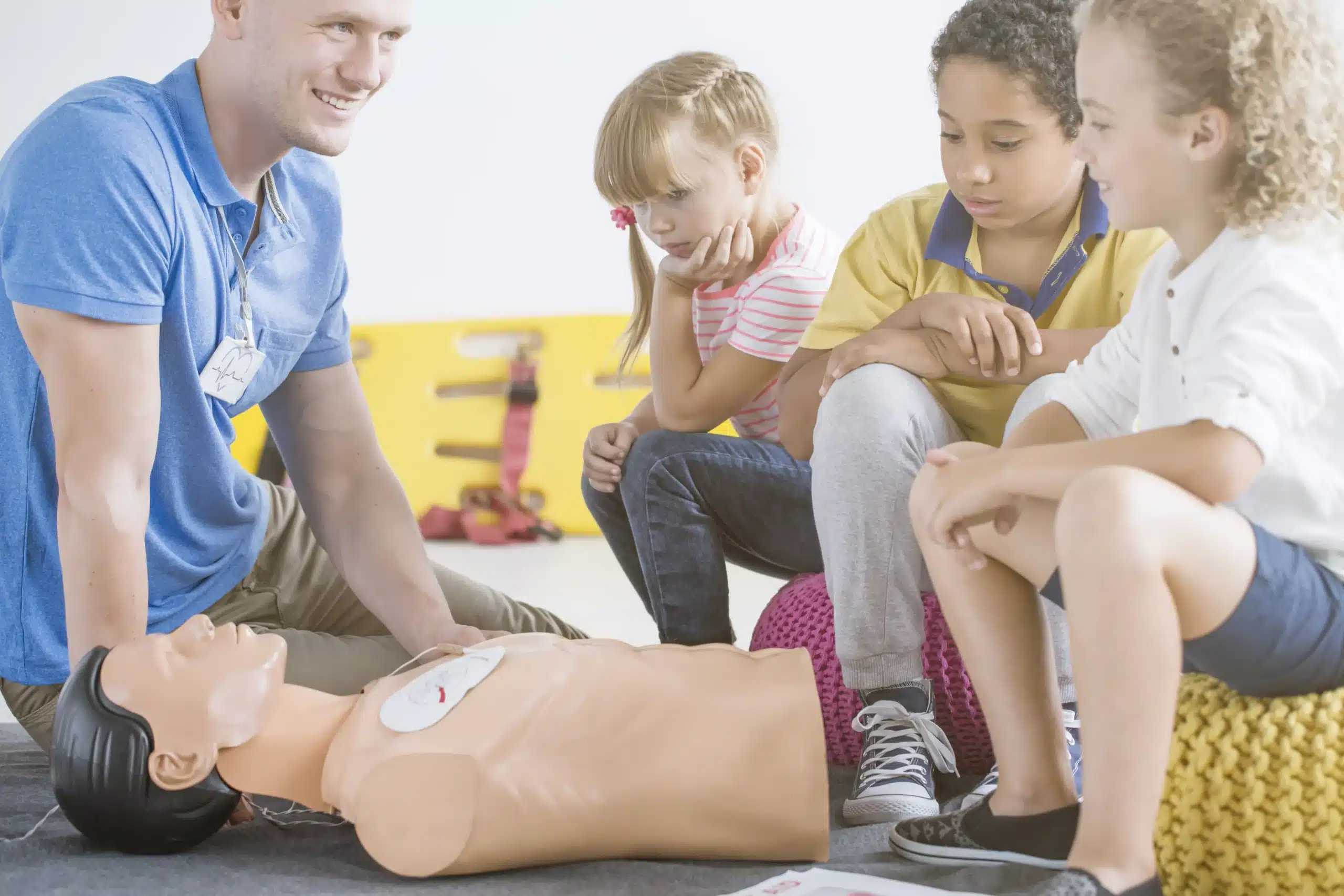Faced with a medical emergency, knowing CPR can make all the difference. This comprehensive guide walks you through the essentials of CPR certification, explaining the various types, including BLS, ACLS, and PALS. We’ll cover the costs, the certification process, and how to find training near you. Whether you’re a healthcare professional, a concerned citizen, or simply looking for “CPR certification near me,” this article provides the information you need to get started. Let’s empower you to act quickly and confidently in a crisis.
Key Takeaways
- CPR certification empowers you to act: Understanding the different certification levels (BLS, ACLS, PALS) helps you choose the right training for your needs, whether you’re a healthcare provider or simply want to be prepared for any emergency. Hands-on practice builds confidence and equips you with life-saving skills.
- Choosing the right course format is essential: Consider your learning style, schedule, and budget when deciding between in-person classes, online courses, or blended learning programs. In-person training offers direct interaction with instructors and hands-on practice, while online options provide flexibility.
- Preparing for your CPR class sets you up for success: Review any pre-course materials, gather the necessary supplies, and come ready to actively participate. Engaging in the exercises and asking questions will solidify your understanding and build your confidence.
What is CPR Certification?
CPR certification proves you know how to perform cardiopulmonary resuscitation (CPR) and other life-saving techniques. It’s essential for anyone who might need to respond to a medical emergency. CPR certification courses teach you to recognize cardiac arrest, give chest compressions, and provide rescue breaths. Many courses also cover how to use an automated external defibrillator (AED). If you’re in Petaluma, Rohnert Park, or Novato, you can find convenient CPR classes through Safety Training Seminars.
Taking a CPR course doesn’t just give you the skills to perform CPR; it also helps you understand the importance of acting quickly in emergencies. Those first few minutes can be critical. Hands-on classes let you practice on a CPR training mannequin. This practice helps you learn exactly where and how hard to press for effective chest compressions, preparing you for a real-life situation. CPR training equips you to handle various medical emergencies, making it a vital part of first aid training. Safety Training Seminars offers a low price guarantee and classes in over 60 cities.
CPR Certification Types
Knowing which CPR certification is right for you can feel overwhelming. This section breaks down the different types of CPR certifications available—BLS, ACLS, and PALS—to help you make the best choice.
Basic Life Support (BLS)
BLS certification is the foundation for any healthcare provider or anyone who wants to help in a medical emergency. It covers core life-saving skills like CPR, recognizing someone having a heart attack or stroke, and using an AED. BLS certification courses teach rescuers how to provide high-quality CPR for adults, children, and infants. The training emphasizes teamwork and high-performance CPR in various settings. This certification is excellent for healthcare professionals, first responders, and anyone who wants to be prepared for an emergency.
Advanced Cardiac Life Support (ACLS)
ACLS certification builds upon the skills learned in BLS and is designed for healthcare professionals who manage cardiovascular emergencies. Think of it as the next level of training for those who regularly respond to emergencies like heart attacks, strokes, and other life-threatening cardiac events. ACLS training covers advanced airway management, pharmacology, and how to read and interpret ECGs. It also emphasizes effective team dynamics and communication during critical situations.
Pediatric Advanced Life Support (PALS)
PALS certification focuses on the specific needs of infants and children facing medical emergencies. It’s designed for healthcare providers who work in pediatrics, emergency medicine, or intensive care units. PALS certification covers everything from recognizing respiratory distress and shock in children to providing appropriate interventions. The course emphasizes understanding the different physiological responses of children compared to adults in emergency situations. If you work with children in a healthcare setting, PALS certification is essential.
Find CPR Certification Courses Near You
Finding the right CPR certification course often starts with location. Luckily, there are several convenient options available, from local training centers to online and blended learning programs. Let’s explore the pros and cons of each to help you find the best fit.
Local Training Centers
In-person training at a local training center offers a hands-on learning experience. You’ll receive direct instruction from certified instructors, practice on mannequins, and ask questions in real-time. Many organizations, like the American Red Cross, offer CPR classes and certification across the country. Local businesses also provide certified training. Connecting with a local provider allows for personalized instruction and ensures the training meets specific regional requirements. For residents of Petaluma, Rohnert Park, and Novato, Safety Training Seminars offers a range of AHA-certified courses, including BLS, ACLS, and PALS. They also offer group discounts and a low price guarantee.
Online Course Options
Online CPR courses offer flexibility and convenience. Technology makes it possible to learn the essential knowledge and skills for CPR certification from anywhere with an internet connection. This format works well for those with busy schedules or limited access to in-person training centers. However, it’s important to note that online-only certifications may not satisfy all employers or state regulations. Some states require in-person skills practice and testing. Always check with your employer or state licensing board to ensure the online course meets their specific requirements. CPR and first-aid certification is an important investment, especially considering the prevalence of cardiac arrests.
Blended Learning Programs
Blended learning combines the best of both worlds: online learning and in-person skills practice. You can complete the self-paced, interactive online portion at your convenience and then attend a shorter in-person session to demonstrate your skills and receive feedback from an instructor. This approach offers flexibility while still providing the crucial hands-on experience necessary for effective CPR. Blended learning programs can provide an individualized training approach. This format is ideal for those who prefer a more personalized learning experience while still benefiting from hands-on instruction.
CPR Certification Costs
CPR certification is an investment in lifesaving skills, and understanding the associated costs helps you find a course that fits your budget. Let’s break down the typical expenses involved.
Average Certification Prices
The cost of CPR certification varies depending on several factors, including the type of certification, the training provider, and your location. Basic CPR certification typically ranges from $50 to $150. More advanced certifications, such as ACLS (Advanced Cardiovascular Life Support) or PALS (Pediatric Advanced Life Support), or courses that include first-aid training, can cost $200 or more. Combined CPR and First Aid certification courses often fall between $75 and $200, usually covering the certification fees. Knowing the average prices helps you compare options and make informed decisions.
Group Discounts and Promotions
Many training centers offer discounts for group bookings, making it a cost-effective choice for businesses training their teams. Providers like Safety Training Seminars often have special rates for groups, so it’s worth checking their website or contacting them directly to explore potential savings. Keep an eye out for promotions or discounts offered throughout the year, which can further reduce the overall cost of certification.
Hidden Costs
While the advertised price usually covers the core training and certification, be mindful of potential extra expenses. Some providers might charge additional fees for replacement certification cards, course materials, or other add-ons. Before committing to a course, inquire about the total cost upfront, including any potential hidden fees, so you can accurately budget for your CPR training. Consider factors like course duration, the institution’s reputation, the certification level, and any bundled offerings to find a CPR course that meets both your needs and your budget. Safety Training Seminars offers a low price guarantee, ensuring you receive high-quality, competitively priced training.
Choose the Right Course Format
Finding the right CPR course format depends on your learning style, schedule, and budget. Let’s explore the pros and cons of in-person, online, and hybrid learning options to help you make the best choice.
In-Person Classes
In-person CPR classes offer hands-on training with certified instructors. This direct interaction allows for personalized feedback and real-time correction, invaluable when learning a skill as critical as CPR. You’ll practice on mannequins and learn alongside other students, fostering a collaborative learning environment. This format is ideal for those who thrive in a structured setting and value face-to-face instruction. The hands-on practice and immediate feedback solidify the learning process and build confidence. If you learn best by doing and asking questions in real-time, in-person training might be the perfect fit. Our Petaluma CPR classes offer this valuable hands-on experience.
Online Courses
Online CPR certification courses provide a flexible alternative to traditional in-person classes. Learn at your own pace, revisiting materials as needed, and fitting the training around your busy schedule. This format often appeals to those with limited time or who prefer self-directed learning. However, it’s important to confirm that online-only certifications meet the requirements of your workplace or any governing bodies. While convenient, online courses typically lack the hands-on practice component crucial for developing muscle memory and confidence in performing CPR. If you choose this route, supplement your online learning with practice on a mannequin whenever possible.
Hybrid Learning
Hybrid learning combines online learning’s convenience with the benefits of in-person instruction. You’ll typically complete the theoretical portion online, then attend an in-person skills session to practice and receive feedback from an instructor. This blended approach offers flexibility while still ensuring you get the hands-on experience necessary for effective CPR. Hybrid learning is a great option for those who want the best of both worlds—the convenience of online learning with the importance of hands-on practice. The American Red Cross offers a variety of blended learning CPR courses.
CPR Certification: Duration and Renewal
Certification Timeframes
CPR and First Aid certifications are typically valid for two years. This standard timeframe applies to most major providers, including the American Red Cross, which offers various learning options like in-person and blended learning (online coursework combined with an in-person skills session). Knowing the duration of your certification is crucial for ensuring you’re always prepared to respond to emergencies. While recommendations like those from the CDC encourage providing CPR even if your certification has lapsed, maintaining a current certification demonstrates a commitment to best practices and ensures you’re up-to-date on the latest techniques. At Safety Training Seminars, our certifications align with these industry standards, giving you confidence and peace of mind. You can explore our BLS certification course for more details. We proudly serve Petaluma, Rohnert Park, and Novato, CA, and offer a low price guarantee.
Renewal Process
Renewing your CPR certification is straightforward. Most providers, including the American Red Cross, offer streamlined renewal courses designed for those whose certifications are nearing expiration or have recently expired. These courses often cover updates to guidelines and techniques, ensuring your skills remain sharp and aligned with current best practices. Check with your certifying organization, such as the American Heart Association, for specific renewal options. Staying current with your certification keeps your skills fresh and demonstrates your dedication to providing high-quality care in emergencies. For convenient and affordable renewal options in Petaluma, Rohnert Park, and Novato, Safety Training Seminars offers various courses to meet your needs. We also provide group discounts for businesses looking to recertify multiple employees.
What to Expect in a CPR Course
Knowing what to expect can help you feel prepared and confident on the day of your CPR class. Whether you’re taking a CPR course for personal growth or professional requirements, understanding the curriculum and certification process is key. Here’s what a typical CPR course entails:
Course Content and Skills
CPR courses cover essential life-saving skills applicable in various emergencies. While official CPR certification isn’t required to perform CPR, a course ensures you’re properly trained. You’ll learn to recognize the signs of a cardiac arrest, when to call 911, and how to deliver chest compressions and rescue breaths. Many courses also include AED training. Combined CPR and First Aid certification often cover topics like wound care, treating burns, and managing common medical emergencies. At Safety Training Seminars, we offer a low price guarantee on all our courses, including our ACLS, PALS, and BLS certifications.
Hands-On Practice
CPR courses aren’t just lectures and videos. Hands-on practice is crucial. You’ll work with a CPR training mannequin, developing the muscle memory and practical skills needed for effective compressions. Instructors guide you, ensuring you understand correct hand placement, compression depth, and rate. This builds confidence and prepares you for real-life emergencies. Some courses, like blended learning programs, combine online modules with in-person skills sessions. Consider our discount group classes for a more interactive and affordable learning experience.
Assessment and Certification
Most CPR courses include a skills assessment. This usually involves demonstrating your CPR skills on a mannequin in front of an instructor. The cost of your CPR certification typically covers training materials, instructor fees, and the exam. After successfully completing the course and assessment, you’ll receive your CPR certification card, valid for a specific period (typically two years). Recertification is required to maintain your credentials. Check out our low price guarantee to ensure you’re getting the best value for your training.
Choose a Reputable CPR Provider
Finding the right CPR training provider is crucial for receiving high-quality instruction and a recognized certification. Here’s what to look for:
Accreditation and Recognition
A reputable provider should be accredited by a nationally recognized organization like the American Heart Association (AHA). The AHA offers various training formats, including blended learning, ensuring comprehensive and up-to-date instruction. Their certifications are widely accepted and respected. For example, you can explore the AHA’s eLearning and blended learning courses to see what they offer. This accreditation ensures your training aligns with the latest CPR guidelines.
Instructor Qualifications
Experienced, certified instructors are essential for effective CPR training. Look for providers whose instructors hold current certifications and use modern teaching methods. Hands-on practice is key, so confirm the program includes practice on CPR training mannequins. Effective CPR instruction often dispels common myths, building student confidence.
Student Reviews and Testimonials
Reading reviews from past students offers valuable insights into a provider’s strengths and weaknesses. Look for consistently positive feedback about the instruction, course materials, and overall learning experience. Student feedback provides a real-world perspective on the training’s effectiveness.
Top CPR Certification Providers
Several organizations stand out for their comprehensive CPR training programs:
American Heart Association (AHA)
The AHA offers a range of CPR and first-aid courses, including online-only and blended learning options. This flexibility allows you to choose the format that best suits your learning style and schedule. They are a leading authority in CPR education, and their certifications are highly regarded.
American Red Cross
The American Red Cross is another well-known provider of CPR and first aid training. They offer courses in various locations and formats, making it easy to find one that meets your needs. Explore CPR classes and certification through the Red Cross to learn more.
National Safety Council (NSC)
The NSC emphasizes hands-on training in their CPR and first aid courses, crucial for developing the skills and confidence to respond effectively in emergencies.
Safety Training Seminars
Safety Training Seminars offers various CPR and first aid courses focused on practical skills and real-life scenarios, preparing you for actual emergency situations. Their website provides further program details. Safety Training Seminars offers a low price guarantee and classes in over 60 cities. The Petaluma location serves Petaluma, Rohnert Park, and Novato, CA. AHA Certifications are available for BLS, ACLS, and PALS. Check out discounts for group classes.
ProTrainings
ProTrainings provides online CPR certification courses that include video demonstrations and hands-on skills assessments. This blended approach allows flexibility while ensuring you gain the necessary skills.
Prepare for Your CPR Course
Getting ready for your CPR class isn’t just about showing up—a little prep work can make a big difference. Thinking about what to expect, gathering your materials, and understanding the course content ahead of time can help you feel confident and prepared to learn these lifesaving skills.
Pre-Course Study Materials
Many CPR courses include training materials in the overall cost of certification, covering instructor fees and the certification exam itself. Knowing what’s included upfront helps you budget accordingly. Before you enroll, it’s also a good idea to review the course content to ensure it covers the skills you need, such as adult, child, and infant CPR, AED training, and first aid. Our Petaluma CPR classes cover all these essential skills. We also offer American Heart Association BLS, ACLS, and PALS certifications.
What to Bring
CPR training is hands-on. You’ll be working with CPR training mannequins to practice chest compressions and get a feel for the correct technique. Comfortable clothing is key, as you’ll be actively participating in the exercises. Bring a notebook and pen to jot down notes and any questions you may have for the instructor. And don’t forget a water bottle to stay hydrated throughout the session.
Tips for Success
Come ready to participate actively. Engaging in the exercises and asking questions will solidify your understanding of the material and help you debunk common CPR misconceptions. Take advantage of any practice opportunities or refresher courses offered to keep your skills sharp. Consider our discount group classes for a more affordable option. And remember, there are flexible options out there, including free online CPR courses with immediate feedback, to fit your learning style and schedule. We also offer a low price guarantee.
Common CPR Certification Questions
This section addresses some of the most frequent questions about CPR certification. We’ll cover who can perform CPR, the differences between online and in-person training, and the legal protections in place for those who provide CPR.
Who Can Perform CPR?
Technically, anyone can perform CPR. You don’t need official CPR certification to help someone in a medical emergency. However, proper training ensures you can use this life-saving technique correctly and confidently. A certification course provides the knowledge and hands-on practice necessary to perform CPR effectively and potentially save a life. If you’re considering learning CPR, signing up for a course is a smart move. Safety Training Seminars offers a range of CPR certification courses in Petaluma, Rohnert Park, and Novato, CA.
Online vs. In-Person Training
While online CPR courses offer convenience, they don’t provide the same experience as in-person training. Online courses often lack the hands-on practice and personalized feedback crucial for mastering CPR techniques. In-person classes allow you to work directly with instructors, ask questions, and receive real-time feedback on your performance. This interactive learning environment builds confidence and prepares you for real-life emergencies. Safety Training Seminars offers in-person CPR training in Petaluma.
Many people express concerns about performing CPR incorrectly, potentially injuring the victim, or the hesitation around mouth-to-mouth resuscitation. These are valid concerns, and they highlight the importance of quality, in-person instruction. In-person training addresses these concerns directly, providing the guidance and practice needed to overcome these fears. Our instructors at Safety Training Seminars are experienced professionals dedicated to providing comprehensive training.
Legal Protections for CPR Providers
Good Samaritan laws offer legal protection to those who provide CPR in good faith during an emergency. These laws vary by state, but they generally protect individuals who act voluntarily and without expectation of compensation. While a certification isn’t legally required to perform CPR, investing in a legitimate, in-person CPR course demonstrates your commitment to providing competent care. This can further strengthen your legal standing in the unlikely event of legal questions arising after providing CPR. It also equips you with the skills and confidence to act decisively in a crisis. Contact Safety Training Seminars to learn more about our CPR courses and how they can prepare you for emergencies.
Related Articles
- ACLS Recertification Near Me: Your Complete Guide – Petaluma CPR Classes
- Find CPR Courses Near Me: Your Guide to Lifesaving Training – Petaluma CPR Classes
- Discount Group Classes – Petaluma CPR Classes
- CPR Training in Rohnert Park: Your Complete Guide – Petaluma CPR Classes
- CPR Renewal in Rohnert Park: Find Classes & Costs – Petaluma CPR Classes
Frequently Asked Questions
How do I choose the right CPR certification course? Consider your specific needs and goals. Healthcare providers often require BLS, ACLS, or PALS certification, while others may only need basic CPR and first aid training. Think about your learning style too. If you prefer hands-on learning, an in-person class is a good choice. If your schedule is tight, online or blended learning options offer more flexibility. Finally, compare costs and look for reputable providers like the American Heart Association, the American Red Cross, or local providers like Safety Training Seminars.
What if my CPR certification expires? If your certification lapses, it’s recommended to renew it as soon as possible. While you can still perform CPR in an emergency, a current certification demonstrates your commitment to best practices and ensures you’re up-to-date on the latest techniques. Most providers offer streamlined renewal courses that cover any updates to guidelines and are shorter than initial certification courses.
Is online CPR certification as good as in-person training? Online CPR courses offer flexibility, but they often lack the hands-on practice crucial for developing the muscle memory and confidence needed to perform CPR effectively. In-person training provides direct feedback from instructors, allowing you to refine your technique and ask questions in real time. While online courses can be a good starting point, supplementing them with hands-on practice is highly recommended.
I’m nervous about performing CPR incorrectly. What if I hurt someone? It’s natural to feel apprehensive about performing CPR, but quality training can alleviate those fears. Instructors address common concerns and misconceptions, guiding you through the correct techniques and providing ample practice opportunities. Good Samaritan laws also offer legal protection to those who provide CPR in good faith during an emergency.
What does a CPR course typically cover? CPR courses teach you to recognize the signs of a cardiac arrest, when to call 911, and how to perform chest compressions and rescue breaths. Many courses also include AED training and cover basic first aid techniques like wound care and managing common medical emergencies. The course will involve hands-on practice with CPR training mannequins and an assessment to ensure you’ve mastered the skills.
